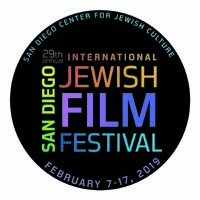From Cairo to the Cloud ~ The World of the Cairo Geniza; filmmaker Michelle Paymar; English language; 92 minutes; to be shown during the San Diego International Jewish Film Festival at 7 p.m., Wednesday, Feb. 6, at the Lawrence Family JCC, Garfield Theatre, 4126 Executive Drive, La Jolla.
By Donald H. Harrison

 SAN DIEGO – This documentary was extensively researched and painstakingly crafted by Michelle Paymar. I counted 37 professors, rabbis, authors, librarians, and technicians who contributed bits of information to the story of the famed Geniza of Cairo, from whence comes much of our knowledge about medieval Jewish life in Islamic lands. These on-camera sources represented many of the world’s greatest universities and research institutions including, in Israel, the University of Haifa, Hebrew University, and Tel Aviv University; in Egypt, Ain Shams University; in England, Cambridge and Oxford; in France, the Sorbonne; and in the United States, Jewish Theological Seminary, Princeton University, Johns Hopkins University, Queens College (CUNY), Yale University, Yeshiva University, and UCLA.
SAN DIEGO – This documentary was extensively researched and painstakingly crafted by Michelle Paymar. I counted 37 professors, rabbis, authors, librarians, and technicians who contributed bits of information to the story of the famed Geniza of Cairo, from whence comes much of our knowledge about medieval Jewish life in Islamic lands. These on-camera sources represented many of the world’s greatest universities and research institutions including, in Israel, the University of Haifa, Hebrew University, and Tel Aviv University; in Egypt, Ain Shams University; in England, Cambridge and Oxford; in France, the Sorbonne; and in the United States, Jewish Theological Seminary, Princeton University, Johns Hopkins University, Queens College (CUNY), Yale University, Yeshiva University, and UCLA.
According to halacha (Jewish law), books or manuscripts containing the name of God must not be destroyed, but instead should be given a proper burial with the same kind of honor and dignity accorded to a human being. Before such burial takes place, the books may be stored in a hidden place, known in Hebrew as a Geniza. For nearly 1,000 years, the Jews of the Fustat section of Cairo (once a separate city) trouped up to the balcony of the Ben Ezra synagogue, climbed a ladder, and through an open portal deposited all kinds of papers, not only those with God’s name, but also those dealing with secular matters, such as correspondence, official governmental decrees, invoices, even a child’s practice sheet of the aleph bet.
The tons of material tell the stories of Arab-Jewish relations during the 11th and 12th centuries CE in Cairo, which then was one of the world’s trade and economic capitals. It also included some deeply significant Jewish religious material, including fragments of the “Guide for the Perplexed” in the handwriting of Moses ben Maimon, better known as Maimonides; pages from the Palestinian Talmud (as opposed to the more famous Babylonian Talmud); and pages from the Book of Ben Sira, whose writings are included in the Christian Bible, and also are quoted occasionally in the Talmud.
The story of the treasures of the Geniza took on some aspects of a detective story after Scottish twin sisters Agnes Lewis and Margaret Gibson traveled together through the Middle East collecting rare documents and manuscripts. Their travels took them to the monastery at the foot of Mt. Sinai, where they obtained a Syriac translation of the Gospel of Mark, and then to Cairo, where they purchased other manuscript fragments including one that, despite their knowledge of religious texts and numerous languages, they could not identify. They contacted their friend Mathilde Schechter, who brought the matter to the attention of her husband, Solomon Schechter. Studying the fragment, the Jewish scholar became very excited, identifying it as a handwritten portion of the Palestinian Talmud.
With the financial assistance of his Cambridge University colleague Charles Taylor, Schechter traveled to Cairo where, during the last decade of the 19th century, he became friendly with Cairo’s Chief Rabbi Aharon Raphael ben Shimon, the upshot of which was that he was given permission to take what he wanted from the Genizah. Whenever Schechter would jump down into the storeroom he unintentionally would kick up a cloud of dust, while trampling more documents. Obviously the best course was to remove them to a safer place. Originally, he thought he would cull through them for important material, but eventually he decided to crate up as much as he could and ship it to Cambridge, where he could study the material at leisure. There is an iconic photo of him puzzling at a desk over a manuscript in a room covered in boxes of Genizah materials.
Schechter focused on such religious materials as the Ecclesiasticus of Yeshua Ben Shira, disappointed that researchers at rival Oxford University in the years before his visit also had acquired some portions of the Ben Shira manuscripts.
It wasn’t until nearly a half century later that the other materials from the Geniza were seriously studied by Shlomo Goiten, who eventually produced A Mediterranean Society, a five-volume work (with a sixth volume as an index) that dealt in turn with economic foundations, the community, the family, daily life, and the individual.
Technology revolutionized Geniza studies. Philanthropist Albert Friedberg created a center to digitize every one of the more than 500,000 items that were rescued from the Geniza, and then put more than the digitized images on the Internet. Computer experts, using advanced digital analysis, subsequently were able to determine which fragments were written by the same hand and which could be reunited into a single document, thereby providing more understandable material for experts to study.
While much has been learned from the Geniza, still more awaits analysis. Its contents remain a treasure trove for historians, linguists, and religious scholars.
*
Harrison is editor of San Diego Jewish World. He may be contacted via donald.harrison@sdjewishworld.com